Digital Platforms
Digital platforms are becoming an essential part of the modern enterprise.
They serve as the backbone for operations and engagement, enabling businesses to better manage their resources and reach their customers in more effective ways.
Digital platforms provide a comprehensive set of tools to help enterprises create, manage, and deliver digital experiences quickly and efficiently. These tools can help businesses automate processes, track customer interactions, analyze data, optimize campaigns, and more.
With the help of digital platforms, enterprises can become more agile and responsive to customer needs while increasing efficiency and reducing costs. Using No-code, Low-code, and open source technology.
Digital platforms are a key component of an enterprise’s digital strategy. These platforms provide a foundation to attract and engage customers across the company’s digital touchpoints. By leveraging digital channels, companies can deliver value to customers by providing a tailored experience that facilitates and accelerates the buying process.
Digital platform capabilities help enterprises build more engaging experiences that create a positive brand experience for customers through consistent messaging and personalized content delivery.
The use of digital platforms also gives enterprises better insights into eServices and customer needs and priorities by helping them understand the behaviors of their target audience through advanced analytics tools like machine learning, predictive analytics, and artificial intelligence.
Digital platforms can also help enterprises leverage data to measure ROI for their digital marketing investments, as well as determine the effectiveness of their content strategy in driving conversions. and optimizing sales. through digital channels.


eHealth
In today’s digital world, eHealth is becoming an increasingly important part of healthcare. It refers to the use of digital technologies such as mobile applications, telemedicine, and online patient portals to provide better access to healthcare services for patients.
With eHealth, patients can now easily access their medical records, make appointments with doctors, and even monitor their health from the comfort of their own homes. This has revolutionized the way we access healthcare services and made it easier than ever before for people to receive quality care.
eHealth is the use of information and communication technologies to support healthcare and health-related services. In this sense, eHealth includes the intelligent management of medical records, patient care delivery systems, and other health-related activities. It combines the ability to capture, create, store and use electronic medical records with the potential to communicate findings among providers and patients. eHealth technologies aim to enhance healthcare delivery by transforming existing traditional paper-based systems into digital systems. An integrated care system is a network of health care providers with a common goal of providing coordinated care for populations. Integrated systems vary greatly in their structure and organization, but are more likely than not to include hospitals and physicians (or single individuals), as well as other organizations such as nursing homes, home health agencies, hospices or clinics.
An important resource for eHealth is personal digital health (PDH) which refers to utilizing technology to digitally transform patients’ personal health data for improved privacy, security and convenience. Additionally, it refers to applications that help individuals take control of their own personal data within their healthcare experience. These applications can be integrated into smartphones or PCs with a range of easy-to-use tools.
As technology continues to evolve, eHealth will become even more important in providing improved access to healthcare services for all.
eFinance
eFinance is the process of managing financial transactions and investments online. It has become increasingly popular in recent years due to its ease of use and convenience. With eFinance, users can access financial services from anywhere in the world with just a few clicks. They can make investments, transfer funds, pay bills, view their accounts and more without having to leave their homes or offices.
Electronic Funds Transfer (EFT) is one of the services offered by eFinance. It allows a user to transfer money electronically from one bank account to another. With an EFT, funds are transferred directly from one institution or person’s account to another. Although this process is typically faster and more convenient than wire transfers, it still requires a certain amount of paperwork and can take a few days or weeks to complete. The Electronic Funds Transfer Act governs the use of electronic funds transfer in the United States. The legislation was passed in 1978 and replaced what was formerly known as “check cashing”.
eFinance has been around for decades but in recent years it has seen a surge in popularity. In 2018 the global eFinance market is expected to grow at an annual rate of 5.1% and reached a worth of $935 billion by 2022.The most common form of eFinance is using credit cards and debit cards, which can be used as cash when needed or withdrawn from bank accounts. The keys to successful e-commerce transactions are speed, convenience and security.
eFinance allows users to manage their finances by providing them with a secure and convenient platform for all their financial needs. It allows users to save time and money while still getting access to quality financial services that are tailored to their individual needs.
As a result, eFinance has revolutionized the way people manage their finances by providing them with a secure and convenient platform for all their financial needs. It allows users to save time and money while still getting access to quality financial services that are tailored to their individual needs. Their mission is to provide a safe and secure place for their users to manage their finances for a better financial future.


Digital Identity
Digital identity and trust services are becoming increasingly important in the digital world. It is a set of data that identifies an individual or organization online. It includes information such as name, national id, email address, telephone number, biometric information, social media accounts, and other online activities.
Digital identity allows us to securely access services and products online. It also helps protect users from fraud and cybercrime. With the rise of online transactions, businesses are taking extra measures to ensure their customers’ digital identities are secure. This includes using biometrics technology to authenticate users and encrypting data to protect it from unauthorized access.
By understanding how digital identity works, we can better protect ourselves from identity theft and other malicious activities. Furthermore, we can use our digital identities to benefit our lives by having quick access to services like banking and shopping online with confidence.
One of the services offered as Digital Identity is MobileID. MobileID is a revolutionary technology that allows users to securely access their accounts and services with their mobile devices. It eliminates the need for passwords and provides a more secure authentication process.
With MobileID, users can quickly and easily log in to websites, apps, and services without having to remember complex passwords or use multiple authentication methods. The technology is very useful is it provides an extra layer of security by allowing users to set up additional authentication factors such as biometric scans or facial recognition. MobileID is becoming increasingly popular among businesses and organizations over the years as it offers an efficient way of providing secure access to their systems while keeping user data safe from malicious users.

